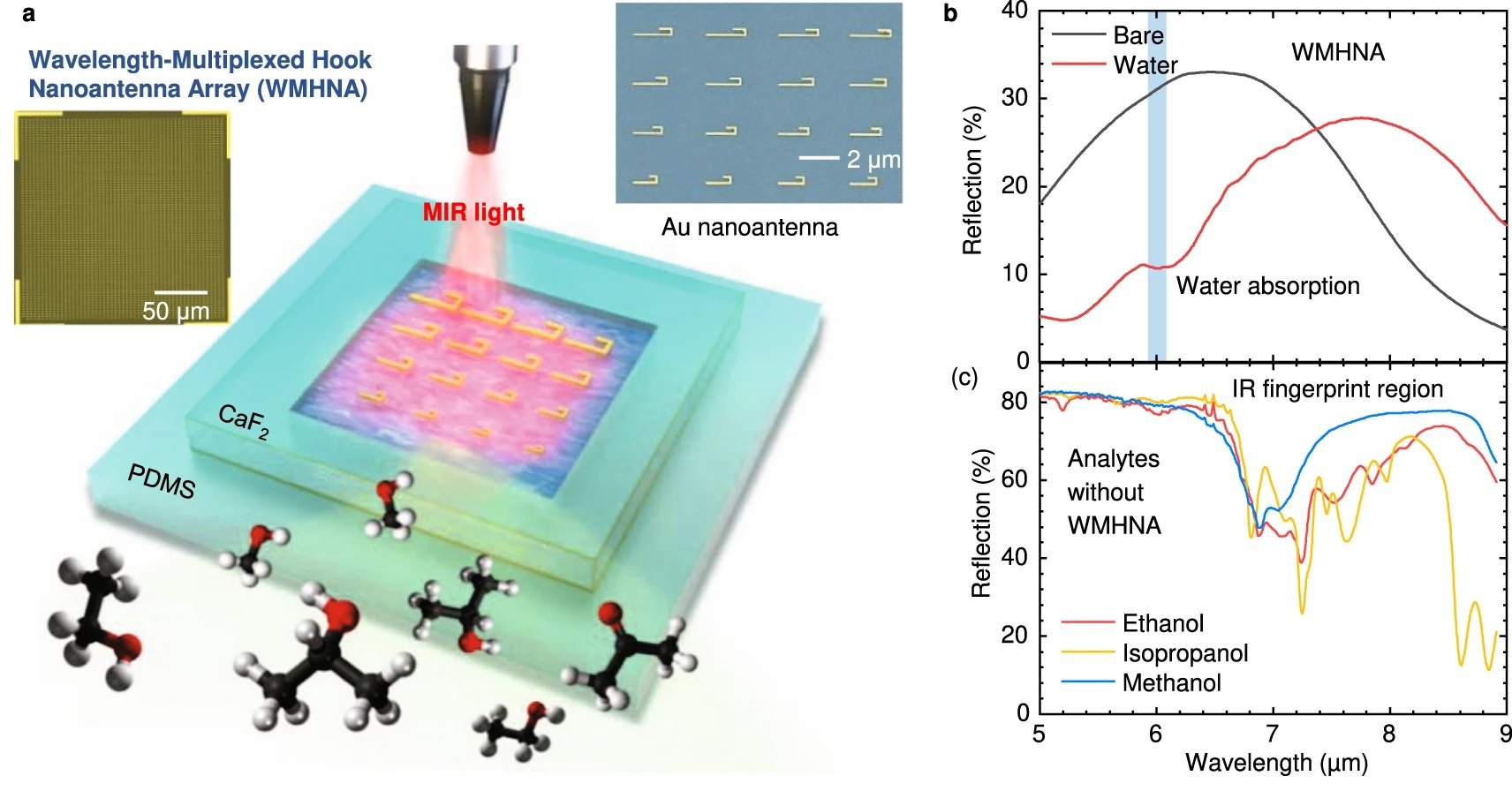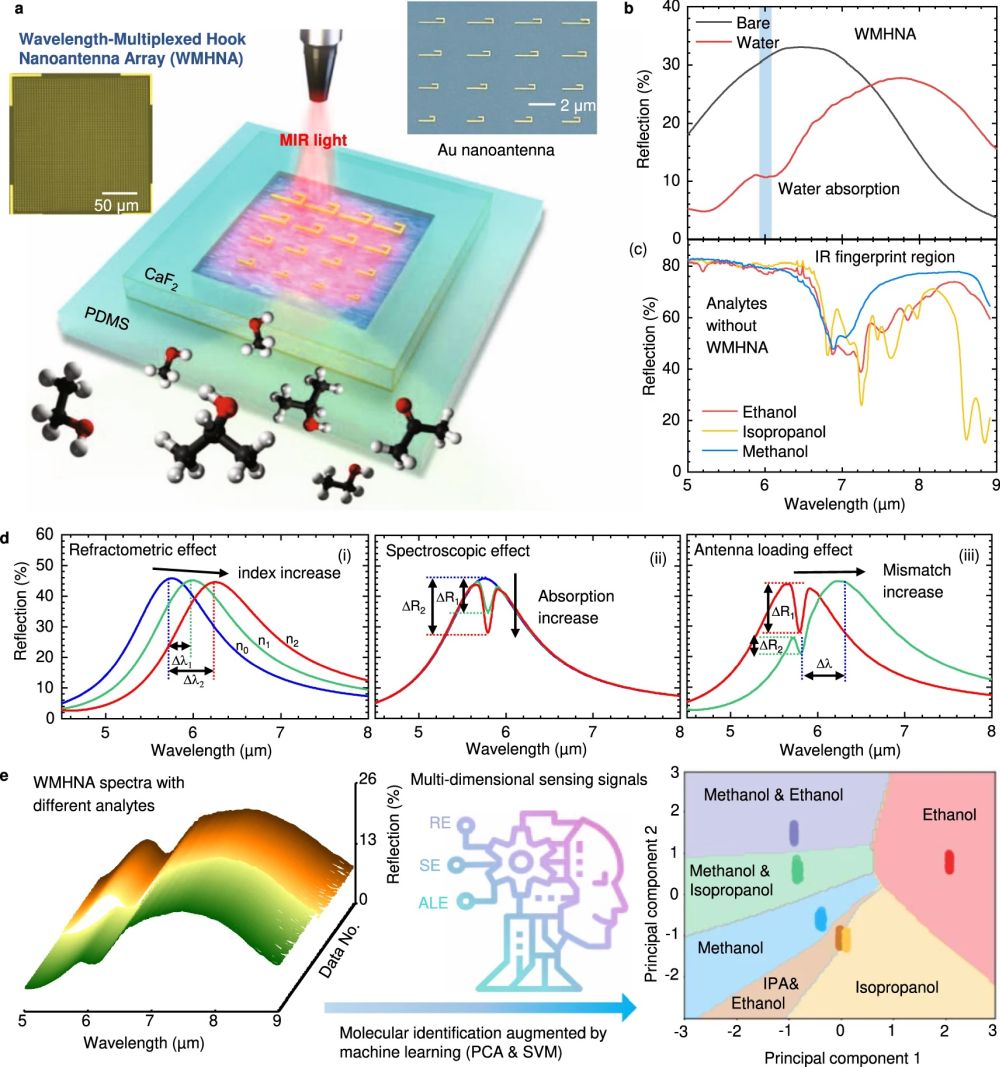
07 Jul Microfluidics, Nanoantennas, and Machine learning: A successful combination for molecular sensing
Abstract
“Infrared (IR) plasmonic nanoantennas (PNAs) are powerful tools to identify molecules by the IR fingerprint absorption from plasmon-molecules interaction. However, the sensitivity and bandwidth of PNAs are limited by the small overlap between molecules and sensing hotspots and the sharp plasmonic resonance peaks. In addition to intuitive methods like enhancement of electric field of PNAs and enrichment of molecules on PNAs surfaces, we propose a loss engineering method to optimize damping rate by reducing radiative loss using hook nanoantennas (HNAs). Furthermore, with the spectral multiplexing of the HNAs from gradient dimension, the wavelength-multiplexed HNAs (WMHNAs) serve as ultrasensitive vibrational probes in a continuous ultra-broadband region (wavelengths from 6 μm to 9 μm). Leveraging the multi-dimensional features captured by WMHNA, we develop a machine learning method to extract complementary physical and chemical information from molecules. The proof-of-concept demonstration of molecular recognition from mixed alcohols (methanol, ethanol, and isopropanol) shows 100% identification accuracy from the microfluidic integrated WMHNAs. Our work brings another degree of freedom to optimize PNAs towards small-volume, real-time, label-free molecular recognition from various species in low concentrations for chemical and biological diagnostics.”

“a Schematic drawing of WMHNA on CaF2 platform with PDMS microfluidic chamber. Inset SEM image of one unit cell of WMHNA. b The far-field spectra of WMHNA with and without water measured in the reflection mode of the FTIR microscope. c The reference IR absorption spectra of alcoholic liquid (methanol, ethanol, and isopropanol) in the IR fingerprint region match with the broadband response of WMHNA. d Illustration of multi-dimensional information in WMHNA system. (i) Refractometric effect (RE): wavelength shift caused by the refractive index of analytes; (ii) Spectroscopic effect (SE): intensity drop due to the absorption of analytes; (iii) Antenna loading effect (ALE): the peak difference brought by the wavelength mismatch between analytes vibration and antenna resonance. e Machine learning process to extract multi-dimensional sensing information for recognition of 1% alcohols and their mixtures in water.” Reproduced under Creative Commons Attribution 4.0 International License from Ren, Z., Zhang, Z., Wei, J. et al. Wavelength-multiplexed hook nanoantennas for machine learning enabled mid-infrared spectroscopy. Nat Commun 13, 3859 (2022).
Figures and the abstract are reproduced from Ren, Z., Zhang, Z., Wei, J. et al. Wavelength-multiplexed hook nanoantennas for machine learning enabled mid-infrared spectroscopy. Nat Commun 13, 3859 (2022). https://doi.org/10.1038/s41467-022-31520-z under Creative Commons Attribution 4.0 International License.
Read the original article: Wavelength-multiplexed hook nanoantennas for machine learning enabled mid-infrared spectroscopy


